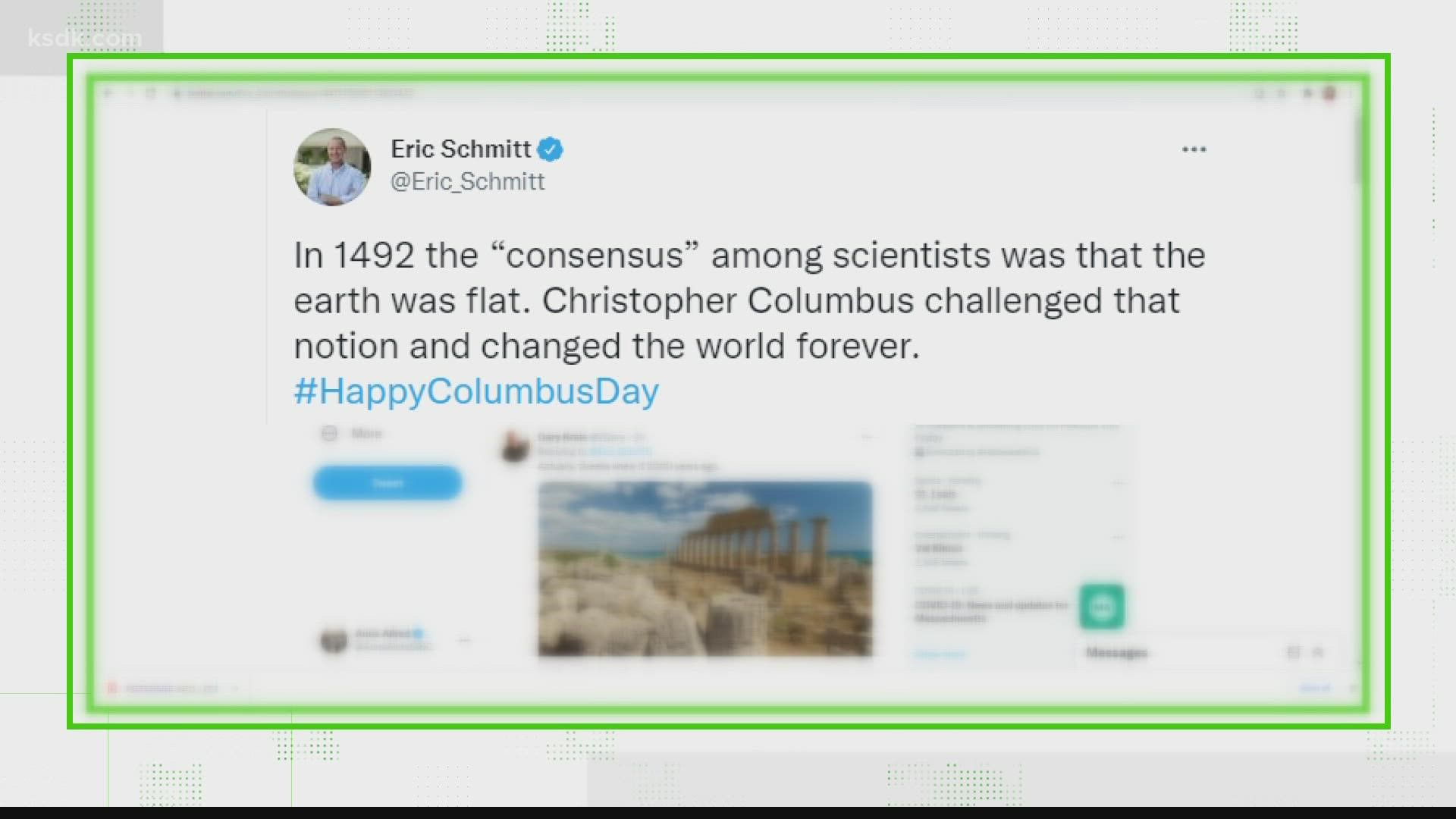ST. LOUIS — Columbus Day was observed on October 11 this year, but not in as many places as it used to be. President Joe Biden and an increasing number of states are choosing to recognize Indigenous People’s Day instead.
Missouri Attorney General Eric Schmitt, who is running for US Senate, made this argument on Twitter for the continued celebration of Christopher Columbus.
He wrote: “In 1492 the 'consensus' among scientists was that the earth was flat. Christopher Columbus challenged that notion and changed the world forever.”
It’s been shared almost 3,000 times, but many of those shares came from people skeptical of the facts posed in the tweet.
THE QUESTION
Did Columbus prove scientists in his time wrong by sailing to what he thought was Asia, and not falling off the edge of the Earth?
THE SOURCES
Jeffrey Burton Russell’s 1991 book Inventing the Flat Earth
And Christopher Columbus himself, in the form of archived letters
THE ANSWER
No, Christopher Columbus did not disprove the understanding of scientists of his time by proving that the Earth is round.
WHAT WE FOUND
Jeffrey Burton Russell, a professor emeritus of history at the University of California, Santa Barbara, who received his PhD from Emory University, dedicated an entire book to the source of this claim, repeated in some biographies and textbooks since the 1800s.
Russell wrote that many astronomers, scholars, and map-makers in Columbus’s time were talking about reaching the “Indies,” or any part of Asia, over the ocean to the west of Spain. They even used calculations by second-century mathematician Ptolemy to estimate how far it would be.
Russell added that Columbus himself never wrote that he wanted to prove that the Earth was round.
In a letter quoted in Columbus's Encyclopedia Brittanica entry, the admiral wrote that he wanted to find a westward path “by which to this day we do not know certainly that anyone has passed.”
His primary goals were to open up trade routes that had been blockaded in the east and south and identify new populations for missionaries to convert to Christianity.
Russell's research found that Spanish councils, which included religious scholars, at the time debated whether the return trip would be more challenging because of the curvature of the Earth. They suggested, based on Ptolemy’s calculations, that it would just be too far to be practical.
Historians today suspect Columbus misled the King and Queen of Spain with overly optimistic estimates of the journey distance in order to get funding.
His projection for the trip was “about 20% its actual length,” wrote Russell.
Nobody's estimates accounted for the fact that Columbus's ships would run into a large landmass on the way, cutting the trip short while creating economic opportunities for Spain.
Several biographies and books appearing in the 1800s include vivid descriptions of Christopher Columbus attempting to convince religious scholars to approve the journey to the west in spite of their belief that the world is flat. Russell suggests this trend was most popular among Darwinists, who co-opted the myth to make religious opponents of Darwinism look unsophisticated.
So we can VERIFY: the scientists of Columbus’s time did not believe that the Earth was flat, and Columbus didn’t set sail to prove them wrong.
What can the 5 On Your Side VERIFY team factcheck for you? Let us know: email us at verify@ksdk.com or fill out the form below.

